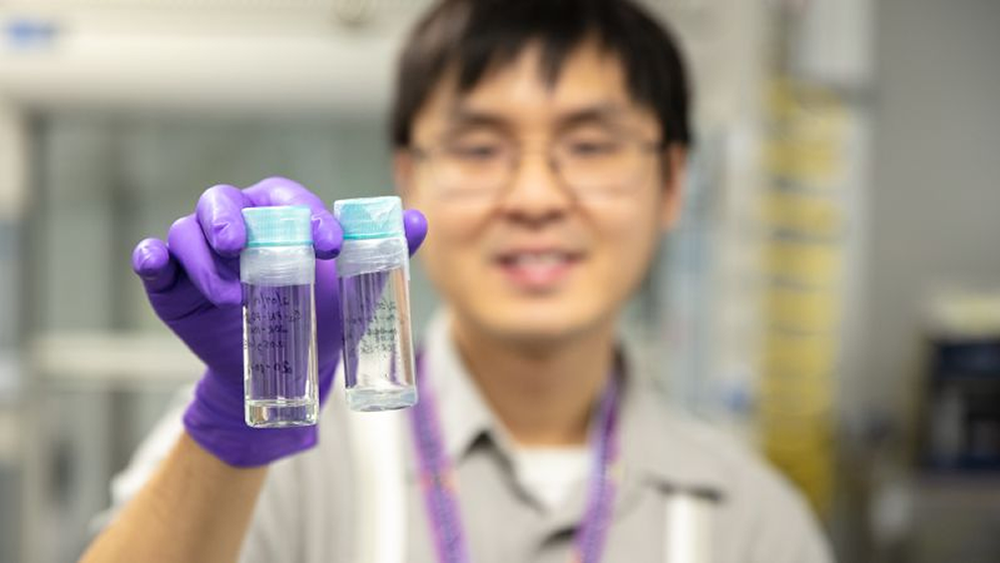June 6, 2019

Products like cosmetics, adhesives, and paints rely on a common key component: gels. Polymer gels, a gel type with unique properties, have piqued the interest of researchers because of their potential uses in medical applications.
Studies have shown that modifying the structures of polymer gels can significantly affect their properties, but it is unclear why. To learn how and why that happens, a team of researchers from the Massachusetts Institute of Technology (MIT) and the Department of Energy’s (DOE’s) Oak Ridge National Laboratory (ORNL) are using neutron scattering to take a deeper look.
Polymer gels are made up of polymer chains with junctions connecting them. As thermodynamic conditions change, the sizes of the junctions change relative to the chains connecting them. The changes can cause the gels to become stronger and develop better response properties. To investigate these relationships, the researchers are using the EQ-SANS instrument at ORNL’s Spallation Neutron Source—a DOE Office of Science User Facility.
“We’re trying to understand the role of the junction size and how the junction interactions contribute to the mechanical properties of the gel,” said Christopher Lam, a postdoctoral research associate at ORNL.
Polymer gels are useful for drug delivery because their structures adapt to changes in their environment. For example, a polymer gel with temperature response properties could flow easily at room temperature but then stiffen in a warmer environment like the human body. These types of gels can help ensure that when a drug is injected into the body, it stays in the area it is meant to impact.
Similarly, polymer gels with pressure response properties can be designed to flow easily while under low pressure in a syringe but then stiffen as the gel is ejected and pressure increases.
Read more at neutrons.ornl.gov.